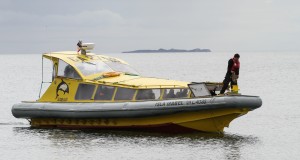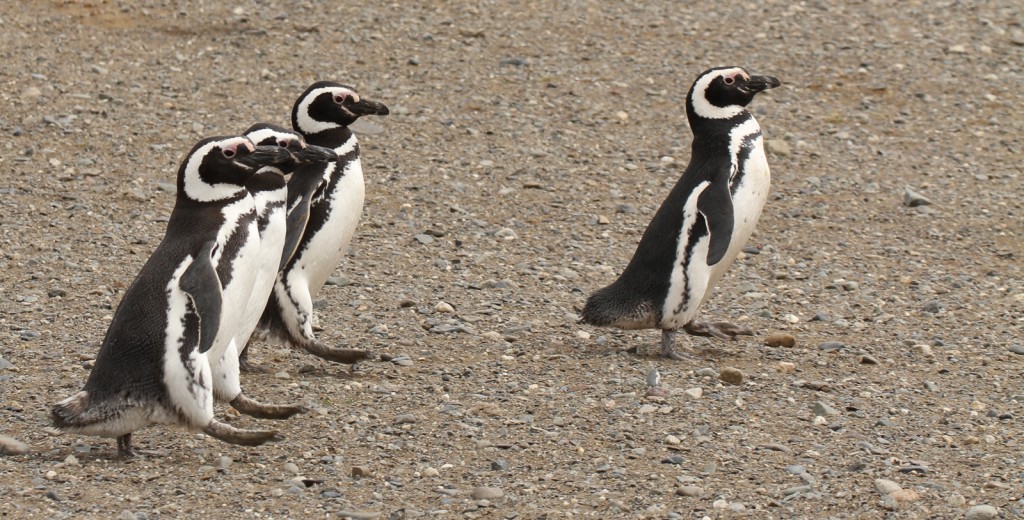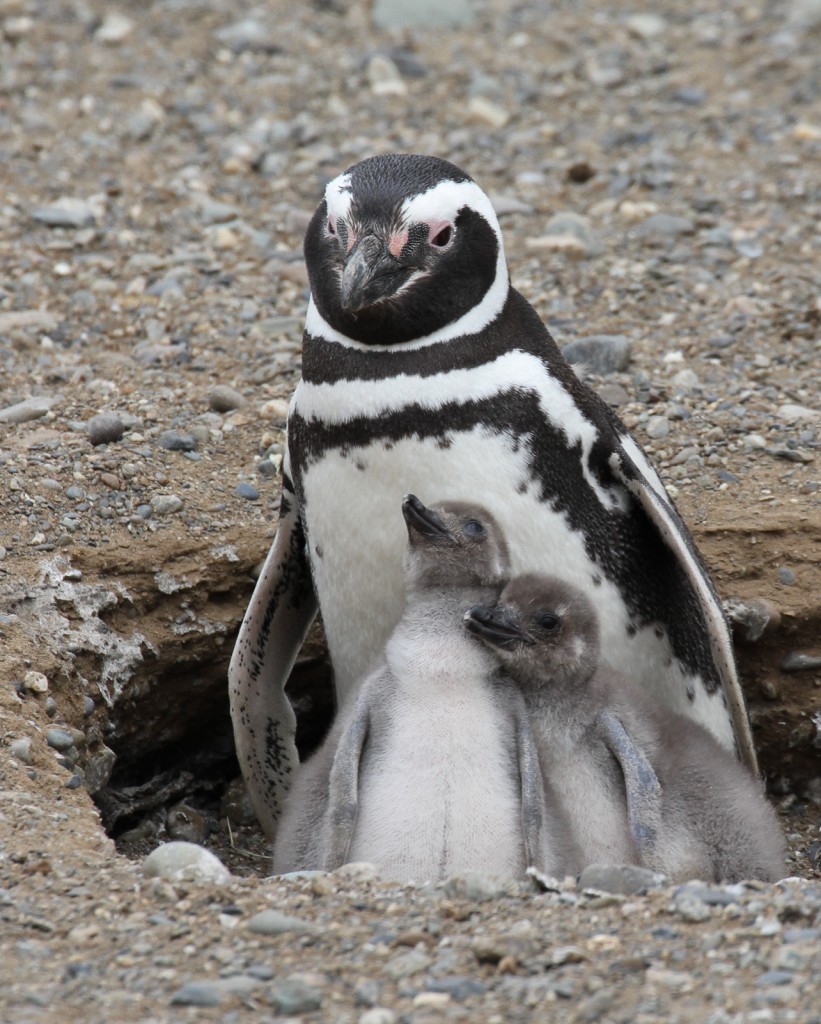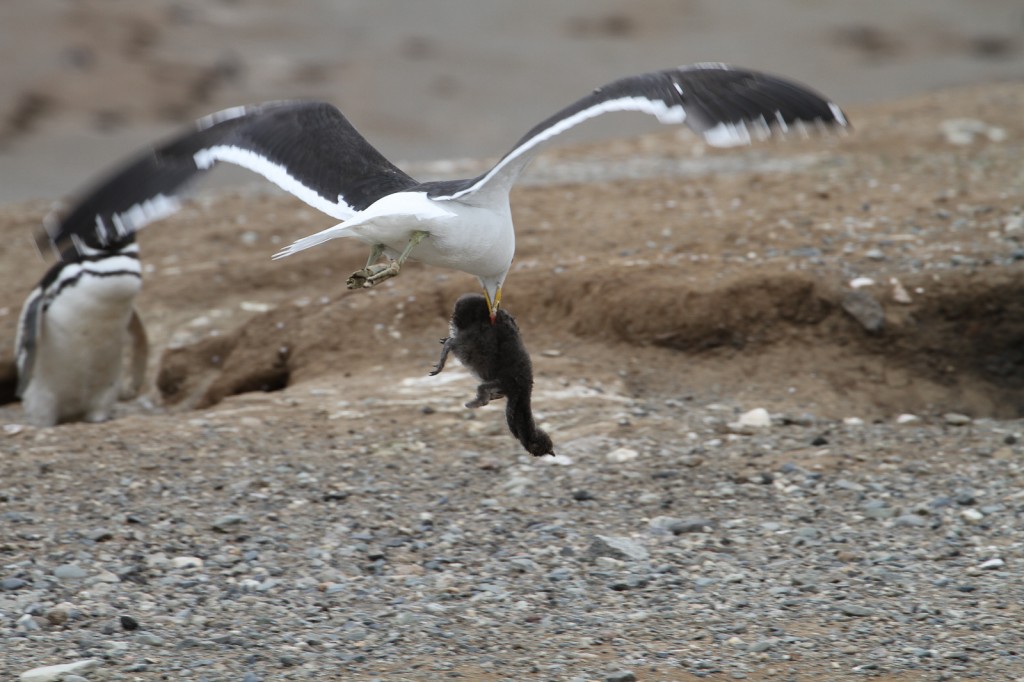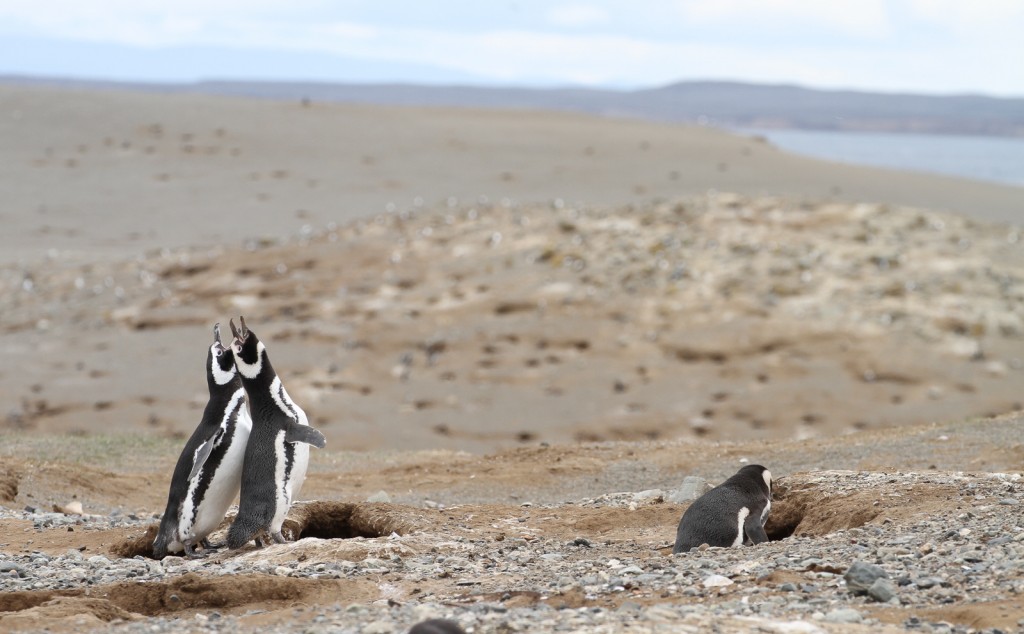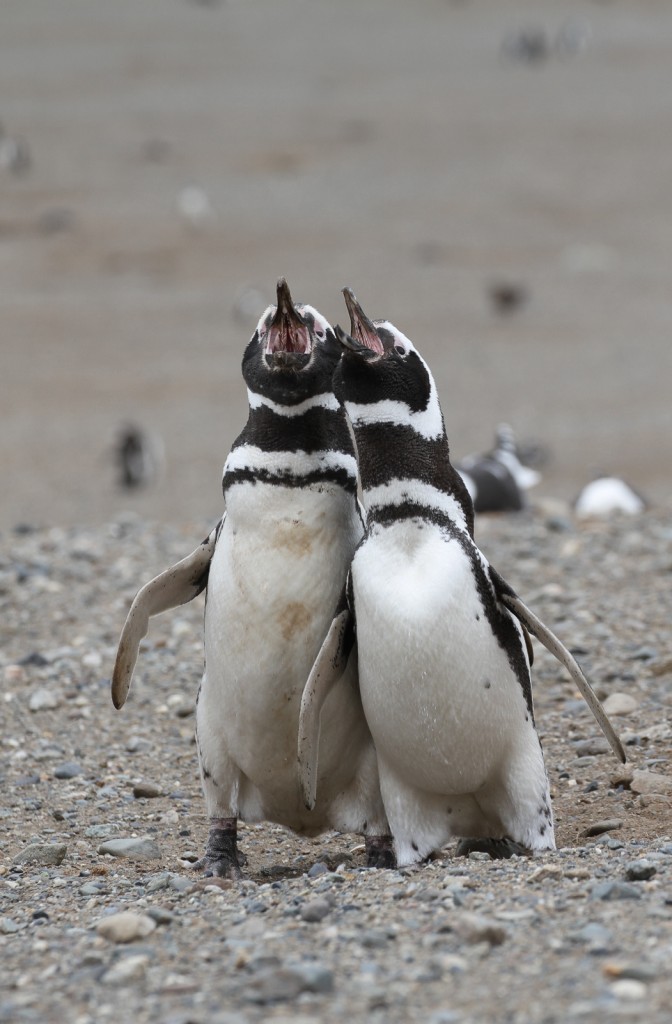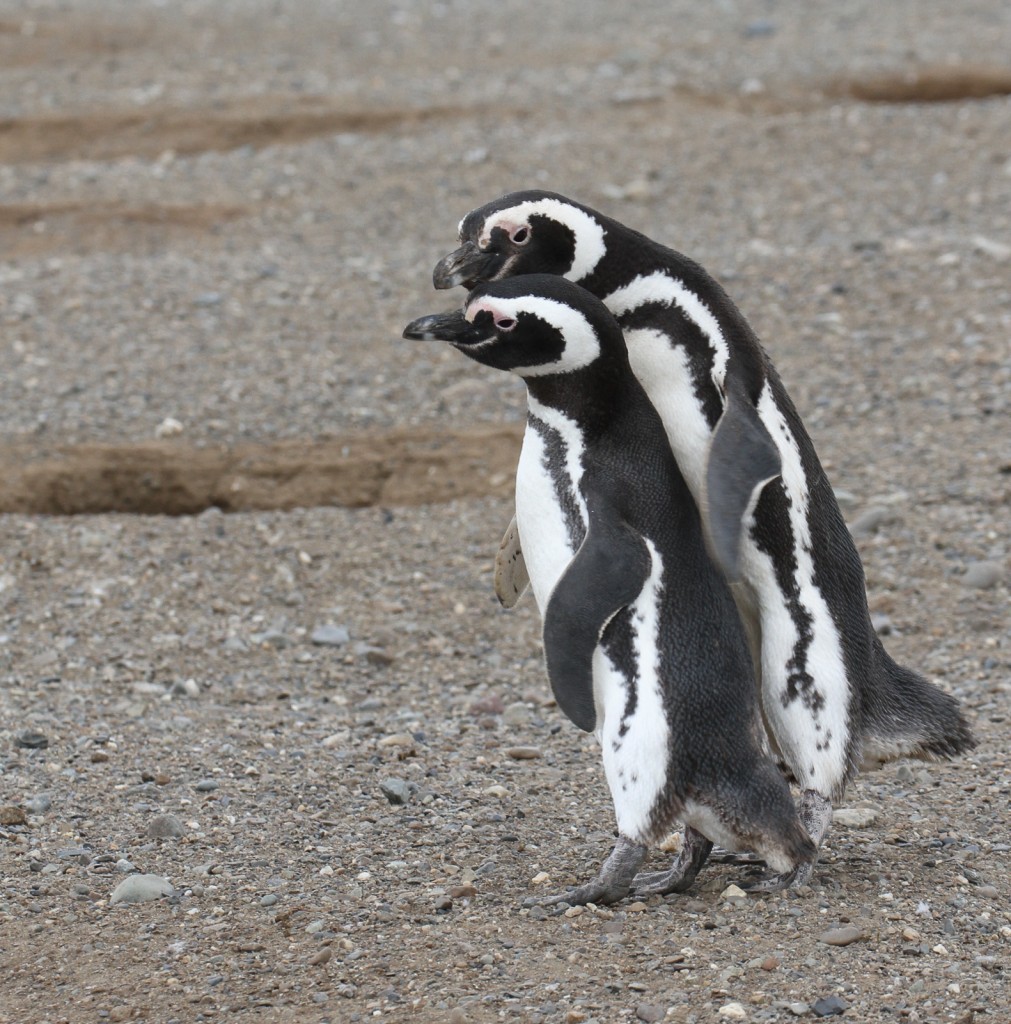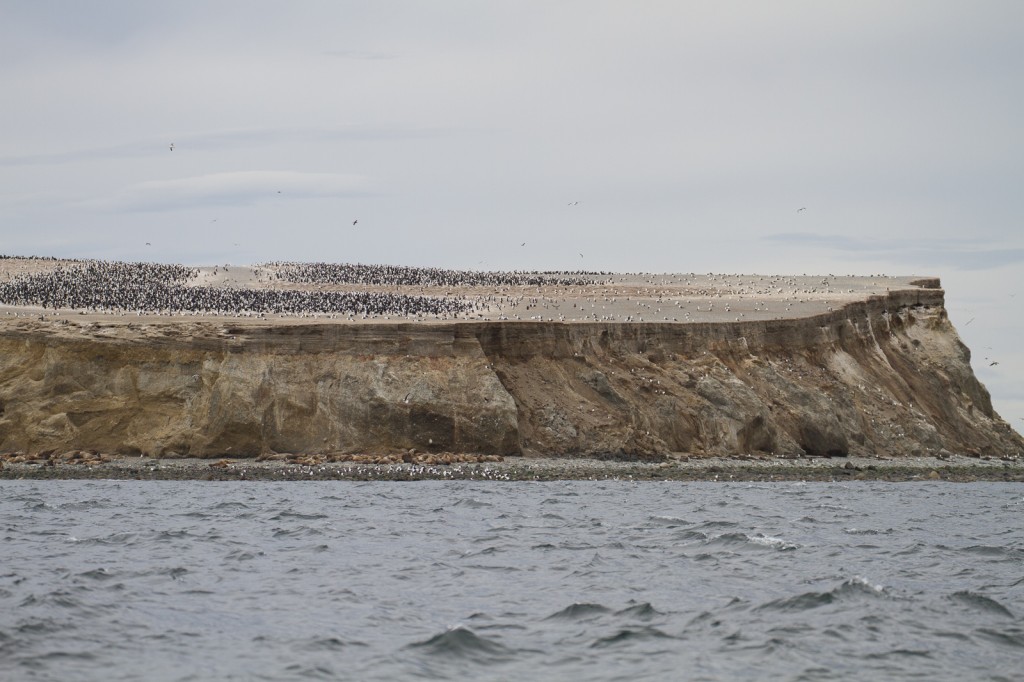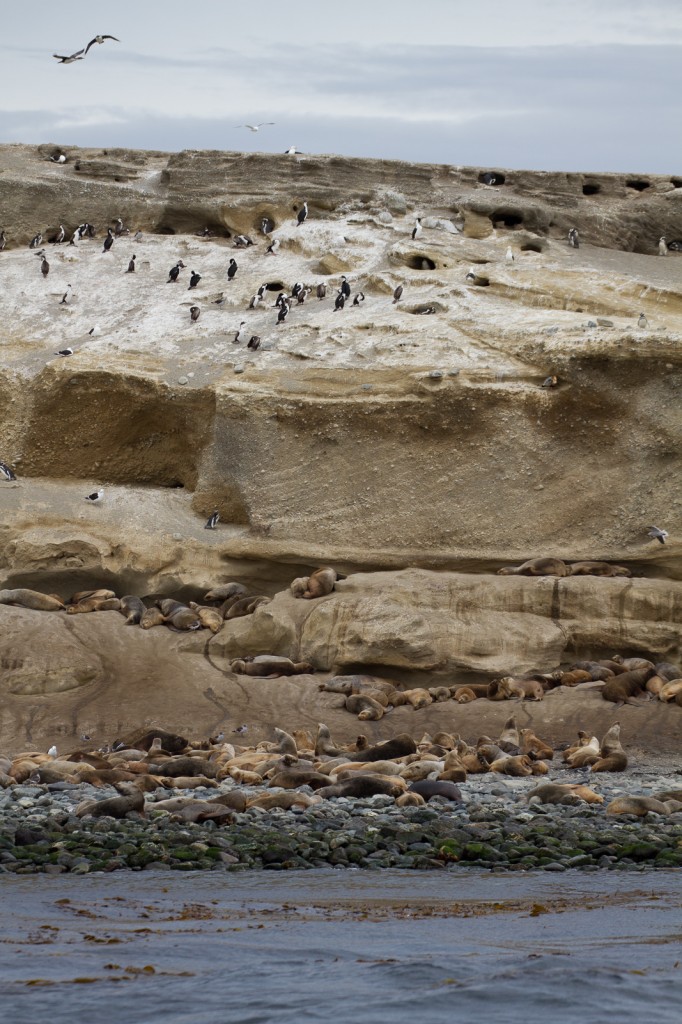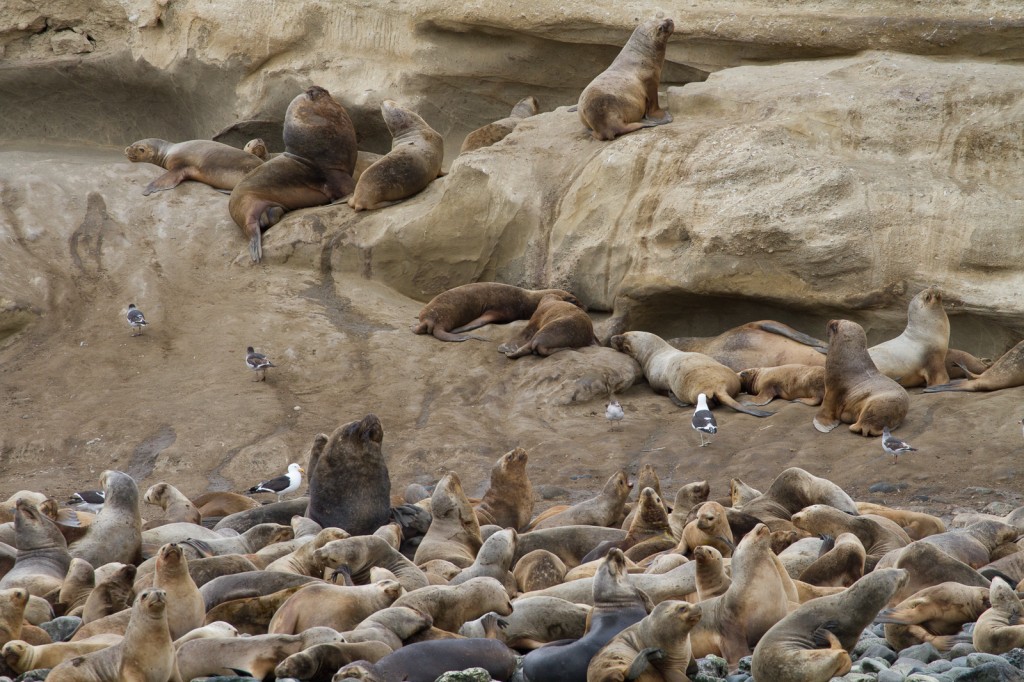Isla Magdalena lies inside the Magellan Strait at the southern end of Chile just north of Antarctica. It is a small (600 square mile), uninhabited island that during the summer months (October-March) becomes a breeding colony for some 120,000 Magellanic penguins. In 1983, the island was declared a protected national monument, Los Pingüinos Natural Monument, and its only human occupants are park rangers there to protect and monitor the penguin population. Visitors walk on a marked trail from the dock to the highest point on the island, where the lighthouse also serves as an Environmental Interpretation Center.
To visit the island, Kyle and I board a high speed Zodiac which makes the transit in about 30 minutes. The Magellanic penguin, which lives up to 25 years, is found only in southern South America and the Falkland Islands. It’s a medium-sized penguin which grows to be 24–30 inches tall and weighs between 6-14 pounds. Adults have black backs and white abdomens with two black bands between the head and the breast. The head is black with a broad white border that runs from behind the eye, around the black ear-coverts and chin, and joins at the throat. Studies show that while the penguin population in the Falklands is declining the numbers in Chile have stayed robust.
The penguins have no fear of humans and will approach to within a few feet as they make their daily commute to the ocean where they fish during the afternoons. Chicks and younger penguins have grey-blue backs, with a more faded grey-blue color on their chest. They are carefully guarded by one or both parents who do their best to keep the youngsters from venturing out of the burrows in which they are born. Vigilance is necessary as their is an abundance of winged predators on the lookout for a wayward chick.
Magellanic Penguins are a flightless birds which “fly” through the water in flocks feeding on cuttlefish, sardines, squid, krill, and other crustaceans. Magellanic Penguins mate with the same partner year after year. The male reclaims his burrow from the previous year and waits to reconnect with his female partner. The females are able to recognize their mates through their call alone.
Our next stop is the even smaller Marta Island which is home to some 1000 South American sea lions (called sea wolves in Chile), countless cormorants, and a medium size contingent of penguins. The male South American sea lions are twice the weight of females and have a very large head with a well-developed mane, making them the most lionesque of the eared seals. They can grow to over 9 feet and weigh up to 800 pounds.


